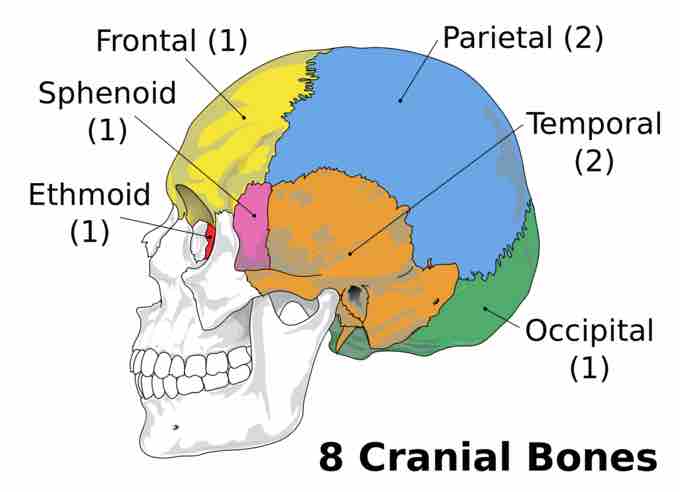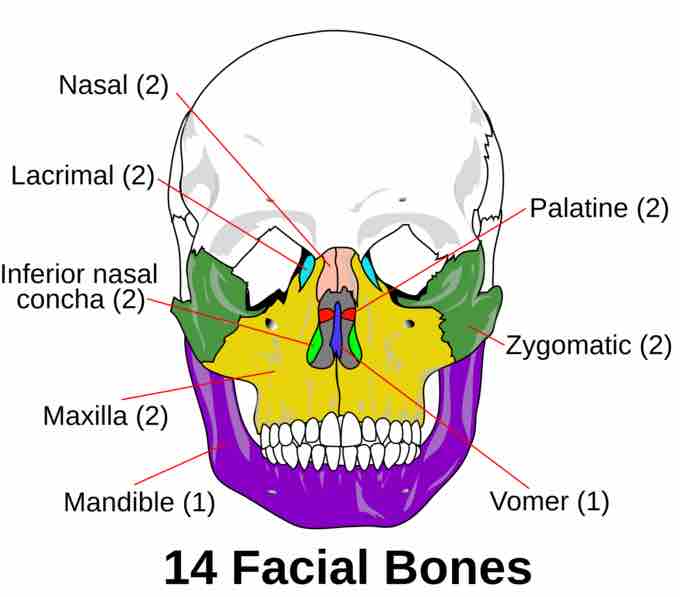The skull supports the musculature and structures of the face and forms a protective cavity for the brain. The skull is formed of several bones which, with the exception of the mandible, are joined together by sutures—synarthrodial (immovable) joints.
Composition of the Skull
The adult human skull is comprised of twenty-two bones which are divided into two parts of differing embryological origin: the neurocranium and the viscerocranium.
Neurocranium
The neurocranium forms the cranial cavity that surrounds and protects the brain and brainstem. The neurocranium is formed from the occipital bone, two temporal bones, two parietal bones, the sphenoid, ethmoid and frontal bones; they are all joined together with sutures.

Components of neurocranium
Neurocranium consists of 8 parts: frontal, sphenoid, ethmoid, occipital, 2 temporal, and 2 parietal bones.
Viscerocranium
The viscerocranium bones form the anterior and lower regions of the skull and include the mandible, which attaches through the only truly motile joint found in the skull. The facial skeleton contains the vomer, two nasal conchae, two nasal bones, two maxilla, the mandible, two palatine bones, two zygomatic bones, and two lacrimal bones.

Components of viscerocranium
The face is made of 2 nasal, 2 lacrimal, 2 palantine, 2 inferior nasal concha, 2 zygomatic, 2 maxilla, 1 mandible, and 1 vomer.
Other Features
The skull also contains the sinuses. These are air-filled cavities that contribute to lessening the weight of the skull with a minimal reduction in strength. They contribute to resonance of the voice and assist in the warming and moistening of air inhaled via the nose.